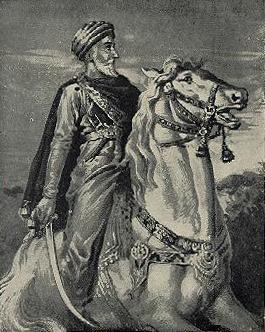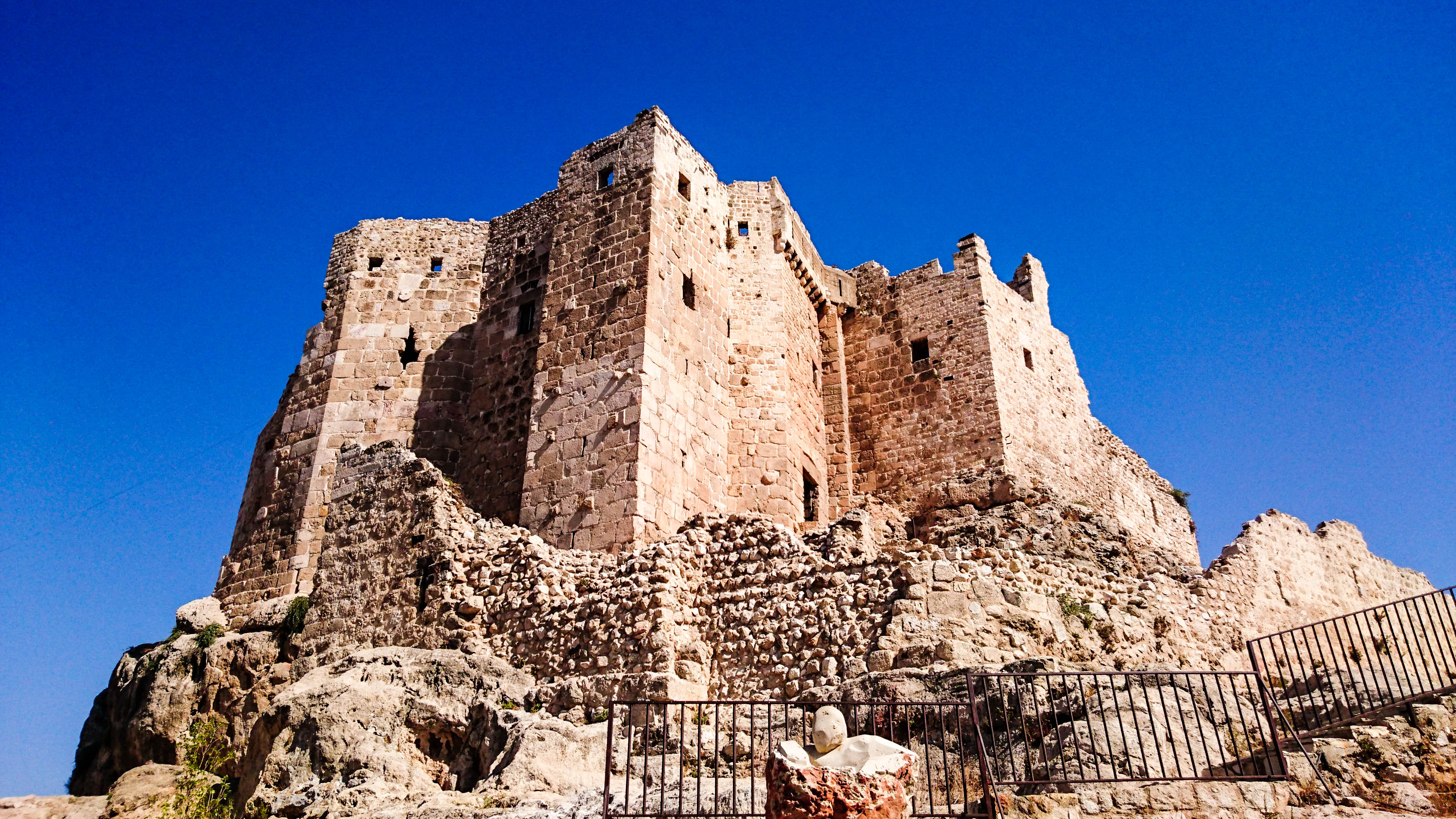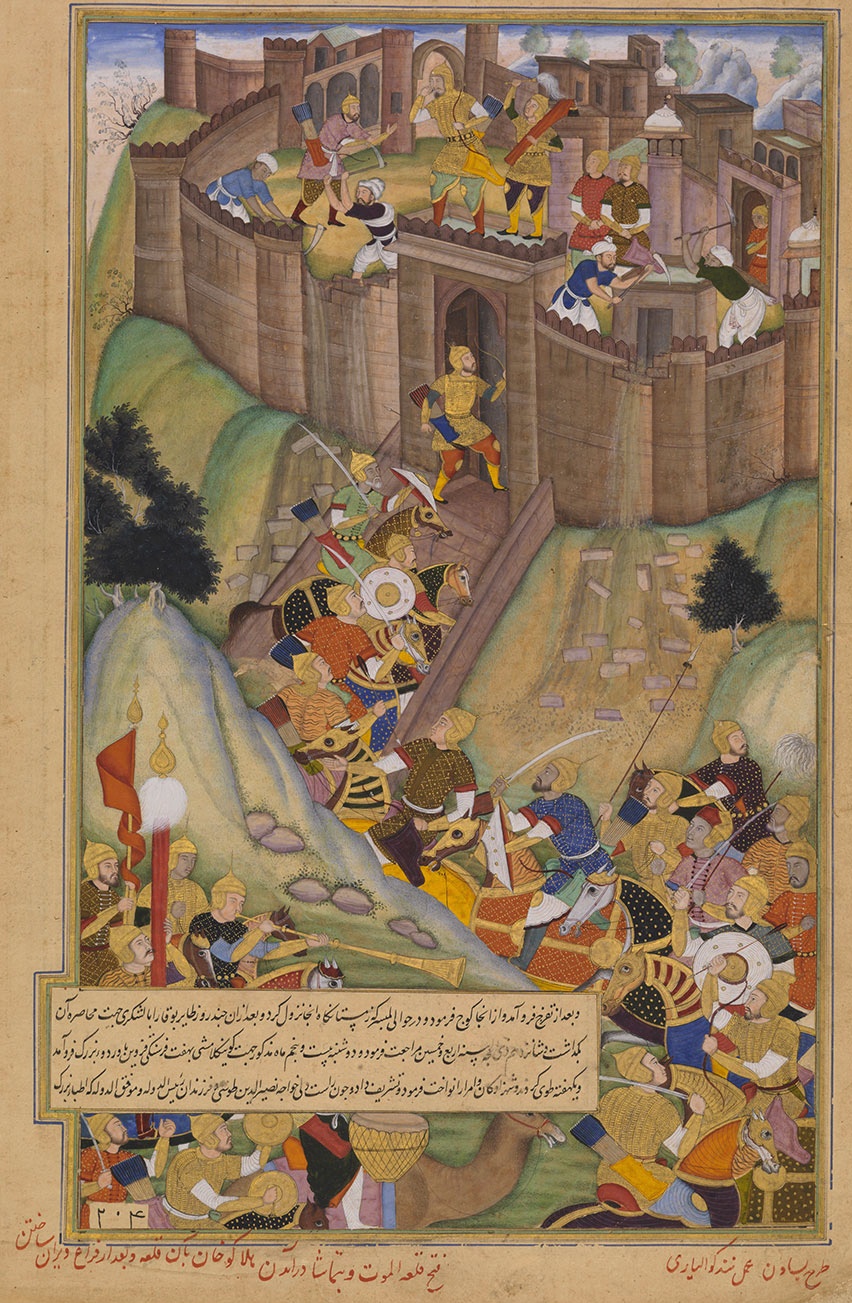|
1090
Year 1090 ( MXC) was a common year starting on Tuesday of the Julian calendar. Events By place Europe * A third Almoravid expedition is launched in Al-Andalus, designed to finally subdue the Taifa's Kingdoms. The cities of Córdoba, Seville, Granada, Málaga, Almería and Ronda fall to the troops of Sultan Yusuf ibn Tashfin. * King Stephen II of Croatia becomes involved in an open conflict between factions of the Croatian nobility, who reassert their traditional rights in their own counties. Seljuk Empire * Hassan-i Sabbah founds the Nizari Ismaili state after taking control of the Alamut Castle and organising the military group called the Order of Assassins. Africa * Béjaïa (or Bugia) becomes the capital of the Hammadid dynasty in modern-day Algeria. It becomes an important port and centre of culture. By topic Arts and Culture * Troubadours begin playing in western Aquitaine (Poitou and Saintonge) and Gascony (approximate date). Science and Technolog ... [...More Info...] [...Related Items...] OR: [Wikipedia] [Google] [Baidu] |
Nizari Ismaili State
The Nizari state (the Alamut state) was a Nizari Isma'ili Shia state founded by Hassan-i Sabbah after he took control of the Alamut Castle in 1090 AD, which marked the beginning of an era of Ismailism known as the "Alamut period". Their people were also known as the '' Assassins'' or ''Hashashins''. The state consisted of a nexus of strongholds throughout Persia and the Levant, with their territories being surrounded by huge swathes of hostile as well as crusader territory. It was formed as a result of a religious and political movement of the minority Nizari sect supported by the anti- Seljuk population. Being heavily outnumbered, the Nizaris resisted adversaries by employing strategic, self-sufficient fortresses and the use of unconventional tactics, notably assassination of important adversaries and psychological warfare. They also had a strong sense of community as well as total obedience to their leader. Despite being occupied with survival in their hostile environment ... [...More Info...] [...Related Items...] OR: [Wikipedia] [Google] [Baidu] |
Order Of Assassins
The Order of Assassins (; ) were a Nizari Isma'ilism, Nizari Isma'ili order that existed between 1090 and 1275 AD, founded by Hasan-i Sabbah, Hasan al-Sabbah. During that time, they lived in the mountains of Persia and the Levant, and held a strict subterfuge policy throughout the Middle East, posing a substantial strategic threat to Fatimid Caliphate, Fatimid, Abbasid, and Seljuk Empire, Seljuk authority, and killing several Christian leaders. Over the course of nearly 200 years, they killed hundreds who were considered enemies of the Nizari Isma'ili state. The modern term assassination is believed to stem from the tactics used by the Assassins. Contemporaneous historians include ibn al-Qalanisi, Ali ibn al-Athir, and Ata-Malik Juvayni. The former two referred to the Assassins as ''batiniyya'', an epithet widely accepted by Isma'ilis themselves. Overview The Assassins were founded by Hassan-i Sabbah. The state was formed in 1090 after the capture of Alamut Castle in the Albo ... [...More Info...] [...Related Items...] OR: [Wikipedia] [Google] [Baidu] |
Alamut Castle
Alamut (, meaning "eagle's nest") is a ruined mountain fortress located in the Alamut region in the South Caspian Sea, Caspian, near the village of Gazor Khan in Qazvin Province in Iran, approximately 200 km (130 mi) from present-day Tehran. In 1090 AD, the Alamut Castle, a mountain fortress in present-day Iran, came into the possession of Hassan-i Sabbah, a champion of the Nizari Isma'ilism, Nizari Ismaili cause. Until 1256, Alamut functioned as the headquarters of the Nizari Ismaili state, which included a series of List of Ismaili strongholds, strategic strongholds scattered throughout Persia and Syria, with each stronghold being surrounded by swathes of hostile territory. Alamut, which is the most famous of these strongholds, was thought impregnable to any military attack and was fabled for its heavenly gardens, library, and laboratories where philosophers, scientists, and theologians could debate in intellectual freedom. The stronghold survived adversaries includin ... [...More Info...] [...Related Items...] OR: [Wikipedia] [Google] [Baidu] |
Almoravid Dynasty
The Almoravid dynasty () was a Berber Muslim dynasty centered in the territory of present-day Morocco. It established an empire that stretched over the western Maghreb and Al-Andalus, starting in the 1050s and lasting until its fall to the Almohads in 1147. The Almoravids emerged from a coalition of the Lamtuna, Gudala, and Massufa, nomadic Berber tribes living in what is now Mauritania and the Western Sahara, traversing the territory between the Draa, the Niger, and the Senegal rivers. During their expansion into the Maghreb, they founded the city of Marrakesh as a capital, . Shortly after this, the empire was divided into two branches: a northern one centered in the Maghreb, led by Yusuf ibn Tashfin and his descendants, and a southern one based in the Sahara, led by Abu Bakr ibn Umar and his descendants. The Almoravids expanded their control to al-Andalus (the Muslim territories in Iberia) and were crucial in temporarily halting the advance of the Christian kingdoms in ... [...More Info...] [...Related Items...] OR: [Wikipedia] [Google] [Baidu] |
Hammadid Dynasty
The Hammadid dynasty (), also known as the Hammadid Emirate or the Kingdom of Bejaia, was a medieval Islamic kingdom in the central Maghreb, encompassing what is now Algeria. It was established at the beginning of the 11th century when Hammad ibn Buluggin declared himself emir, thus splitting the Zirid domains into two separate dynasties. Under the reign of Emir Al Nasir, the emirate briefly became the most important state in the Maghreb, and reached its greatest territorial extent, stretching from Tlemcen in the west to Tunis in the east, and from the Mediterranean Sea in the north to the desert oasis of Ouargla and Oued Righ in the south. While they briefly controlled the principality of Fez in the west and cities like Sfax, Kairouan, Laribus, and Tripoli to the east. At first, Hammad built a fortified city that would serve as the capital for his newly declared kingdom. Later, upon the arrival of the Arabic Banu Hilal tribes, the capital would be replaced by another ci ... [...More Info...] [...Related Items...] OR: [Wikipedia] [Google] [Baidu] |
Stephen II Of Croatia
Stephen II () was the last member of the Trpimirović dynasty and last native king of Croatia to rule the entire medieval Croatian Kingdom.List of Croatian rulers PDF, University of Michigan Stephen's father was Gojslav, the younger brother of Peter Krešimir IV of Croatia. Stephen was duke of Croatia under Krešimir around 1066. He was due to succeed Peter Krešimir IV but was sidelined by the people and clergy in 1075 who instead bestowed the title of king on Demetrius Zvonimir, previously a [...More Info...] [...Related Items...] OR: [Wikipedia] [Google] [Baidu] |
Taifa
The taifas (from ''ṭā'ifa'', plural ''ṭawā'if'', meaning "party, band, faction") were the independent Muslim principalities and kingdoms of the Iberian Peninsula (modern Portugal and Spain), referred to by Muslims as al-Andalus, that emerged from the decline and fall of the Umayyad Caliphate of Córdoba between 1009 and 1031. They were a recurring feature of al-Andalus history. The ''taifas'' were eventually incorporated by the Almoravid dynasty in the late 11th century and, on its collapse, many ''taifas'' re-appeared only to be incorporated by the Almohad Caliphate. The fall of the Almohads resulted in a flourishing of the ''taifas'', and this was the case despite constant warfare with Christian kingdoms. Taifa kings were wary of calling themselves "kings", so they took the title of ''hajib'', presenting themselves as representatives for a temporarily absent caliph. The ''taifa'' courts were renowned centres of cultural excellence in which poets, scientists, and othe ... [...More Info...] [...Related Items...] OR: [Wikipedia] [Google] [Baidu] |
Yusuf Ibn Tashfin
Yusuf ibn Tashfin, also Tashafin, Teshufin, (; reigned c. 1061 – 1106) was a Sanhaja leader of the Almoravid Empire. He cofounded the city of Marrakesh and led the Muslim forces in the Battle of Sagrajas. Yusuf ibn Tashfin came to al-Andalus from the Maghreb to help the Muslims fight against Alfonso VI of León, eventually achieving victory in Sagrajas and promoting an Islamic legal system in the region. In 1061 he took the title ''Amir al-Muslimin'' "Leader of the Muslims", recognizing the suzerainty of the Abbasid caliph as Amir al-Mu'minin "Leader of the Believers". Rise to power Yusuf ibn Tashfin was a Berber of the Banu Turgut, a branch of the Lamtuna, a tribe belonging to the Sanhaja confederacy. The Sanhaja were linked by medieval Muslim genealogists with the Himyarite Kingdom through semi-mythical and mythical pre-Islamic kings and for some reason, some of the contemporary sources (e.g., ibn Arabi) add the '' nisba'' al-Himyari to Yusuf's name to indicate this l ... [...More Info...] [...Related Items...] OR: [Wikipedia] [Google] [Baidu] |
Hassan-i Sabbah
Hasan al-Sabbah also known as Hasan I of Alamut, was an Iranian religious and military leader, founder of the Nizari Ismai'li sect widely known as the '' Hashshashin'' or the Order of Assassins, as well as the Nizari Ismaili state, ruling from 1090 to 1124 AD.Lewis, Bernard (1967), ''The Assassins: a Radical Sect of Islam'', pp 38-65, Oxford University Press Alongside his role as a formidable leader, Sabbah was an accomplished scholar of mathematics, most notably in geometry, as well as astronomy and philosophy, especially in epistemology. E. G. Brown ''Literary History of Persia'', Vol. 1, p. 201. Nizam al-Mulk Tusi, pg. 420, foot note No. 3 It is narrated that Hasan and the Persian polymath Omar Khayyam were close friends since their student years. He and each of the later Assassin leaders came to be known in the West as the Old Man of the Mountain, a name given to the sect's leader in the writings of Marco Polo that referenced the sect's possession of the commanding mount ... [...More Info...] [...Related Items...] OR: [Wikipedia] [Google] [Baidu] |
Granada
Granada ( ; ) is the capital city of the province of Granada, in the autonomous communities of Spain, autonomous community of Andalusia, Spain. Granada is located at the foot of the Sierra Nevada (Spain), Sierra Nevada mountains, at the confluence of four rivers, the Darro (river), Darro, the Genil, the Monachil (river), Monachil and the Beiro. Ascribed to the Vega de Granada ''comarca'', the city sits at an average elevation of Above mean sea level, above sea level, yet is only one hour by car from the Mediterranean coast, the Costa Tropical. Nearby is the Sierra Nevada Ski Station, where the FIS Alpine World Ski Championships 1996 were held. In the 2021 national census, the population of the city of Granada proper was 227,383, and the population of the entire municipal area was estimated to be 231,775, ranking as the Ranked lists of Spanish municipalities, 20th-largest urban area of Spain. About 3.3% of the population did not hold Spanish citizenship, the largest number of these ... [...More Info...] [...Related Items...] OR: [Wikipedia] [Google] [Baidu] |
Al-Andalus
Al-Andalus () was the Muslim-ruled area of the Iberian Peninsula. The name refers to the different Muslim states that controlled these territories at various times between 711 and 1492. At its greatest geographical extent, it occupied most of the peninsula as well as Septimania under Umayyad rule. These boundaries changed through a series of conquests Western historiography has traditionally characterized as the ''Reconquista'',"Para los autores árabes medievales, el término Al-Andalus designa la totalidad de las zonas conquistadas – siquiera temporalmente – por tropas arabo-musulmanas en territorios actualmente pertenecientes a Portugal, España y Francia" ("For medieval Arab authors, Al-Andalus designated all the conquered areas – even temporarily – by Arab-Muslim troops in territories now belonging to Spain, Portugal and France"), García de Cortázar, José Ángel. ''V Semana de Estudios Medievales: Nájera, 1 al 5 de agosto de 1994'', Gobie ... [...More Info...] [...Related Items...] OR: [Wikipedia] [Google] [Baidu] |
Duchy Of Gascony
The Duchy of Gascony or Duchy of Vasconia was a duchy located in present-day southwestern France and northeastern Spain, an area encompassing the modern region of Gascony. The Duchy of Gascony, then known as ''Wasconia'', was originally a Frankish march formed to hold sway over the Basques. However, the duchy went through different periods, from its early years with its distinctively Basque element to the merger in personal union with the Duchy of Aquitaine to the later period as a dependency of the Plantagenet kings of England. Gascony was under continuous English rule for approximately 300 years, from 1152 to 1453. Charles VII of France reconquered the territory as a final act of the Hundred Years' War and the northern part of the territory was annexed by the Kingdom of France in 1453. The corresponding portion within the Iberian Peninsula became the Kingdom of Navarre. History Formation Gascony was the core territory of Roman Gallia Aquitania. By the 2nd century this prov ... [...More Info...] [...Related Items...] OR: [Wikipedia] [Google] [Baidu] |







